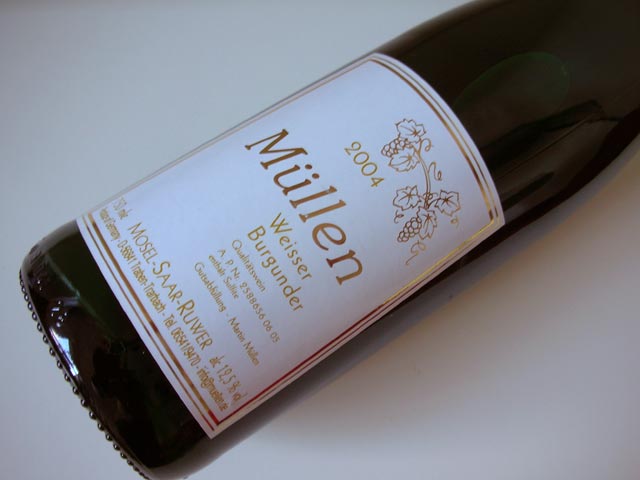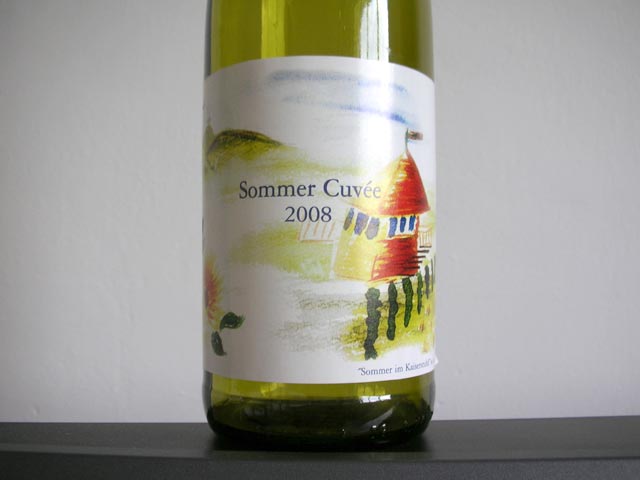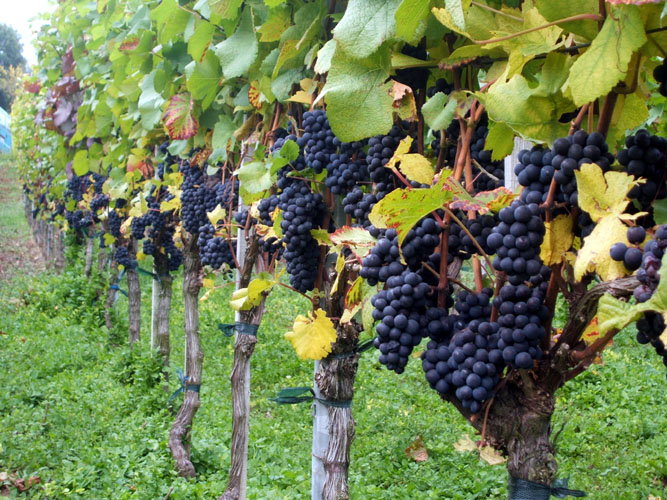Martin Müllen, Weißer Burgunder, 2004
I cannot drink, or even think of, this wine without the memories coming back. It was a couple of years ago, and almost summer, and the Wine Rambler committee visited the Mosel. One of our stops was the village of Traben-Trarbach, where we visited the Müllen winery - and we got more than we bargained for. The full story is better to be told over a glass of Riesling, but very generous tasting samples that kept and kept and kept coming are part of it. And stories that kept and kept and kept coming. And there was a bit about a cat. We sampled many Rieslings that day, different styles too, and also a few other varieties. Among them was an impressive Pinot Blanc, a Weißburgunder, and today I opened the last bottle.







